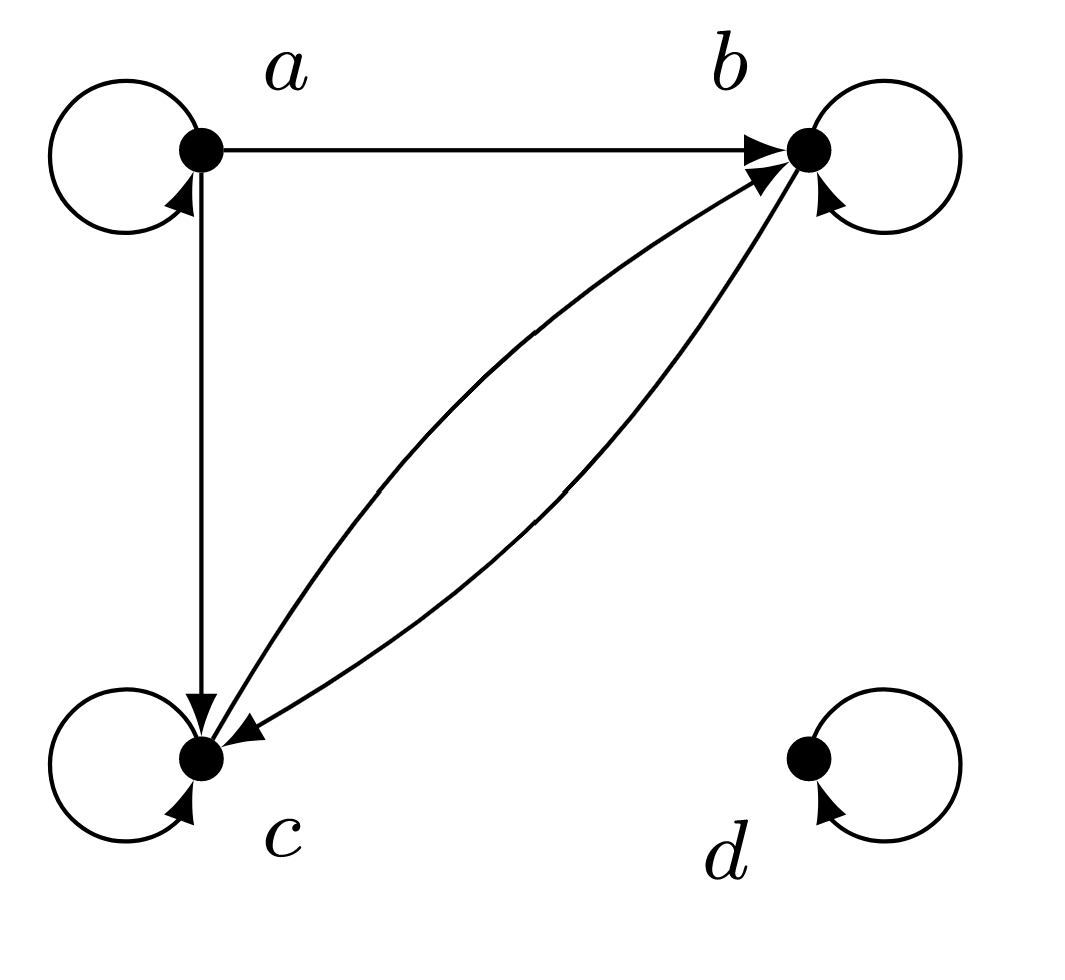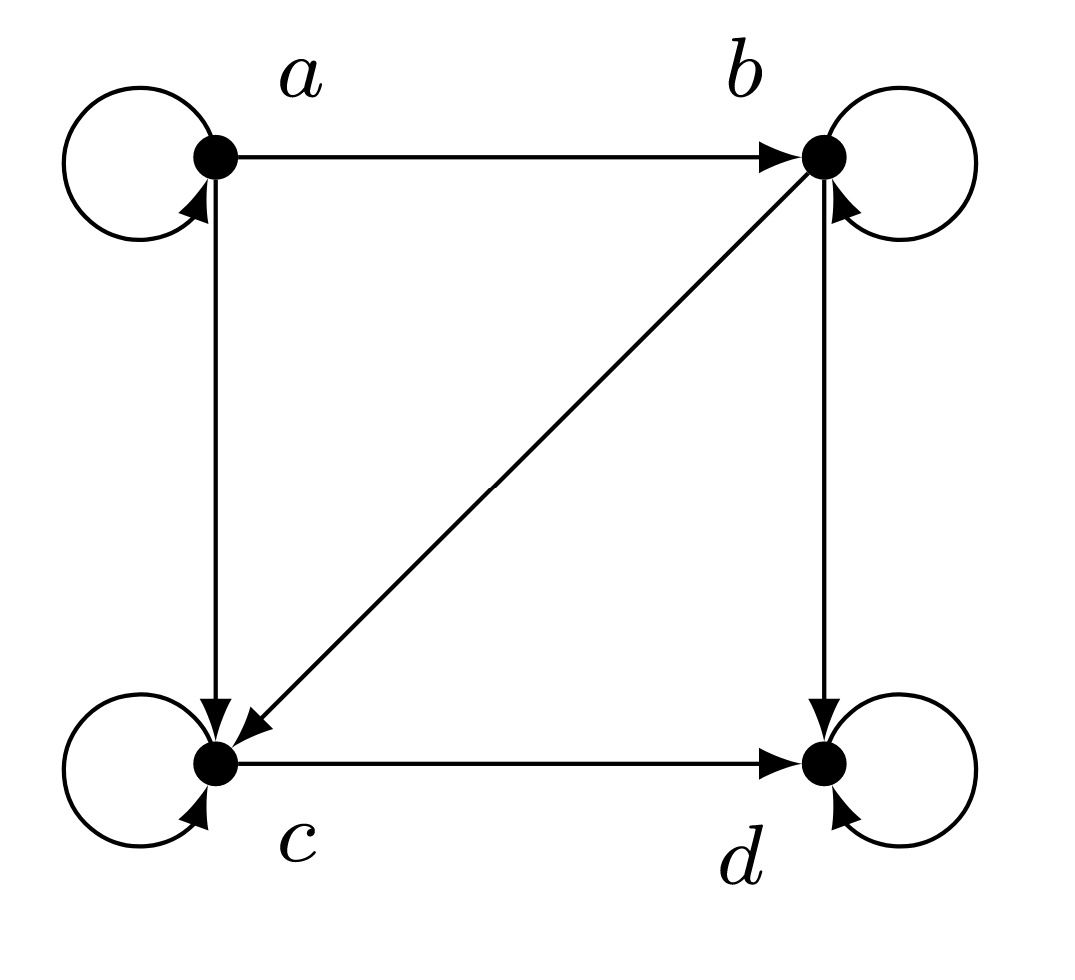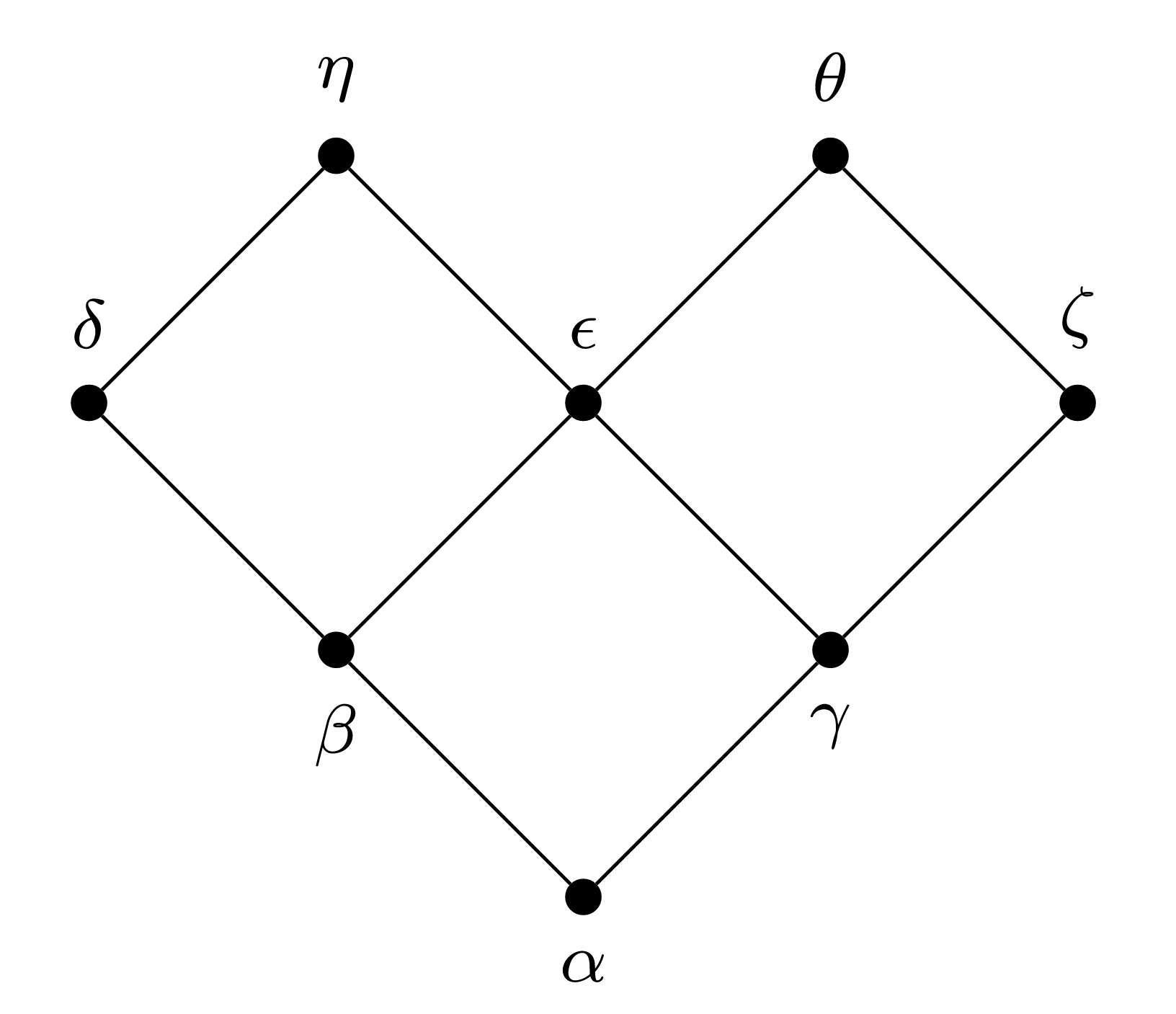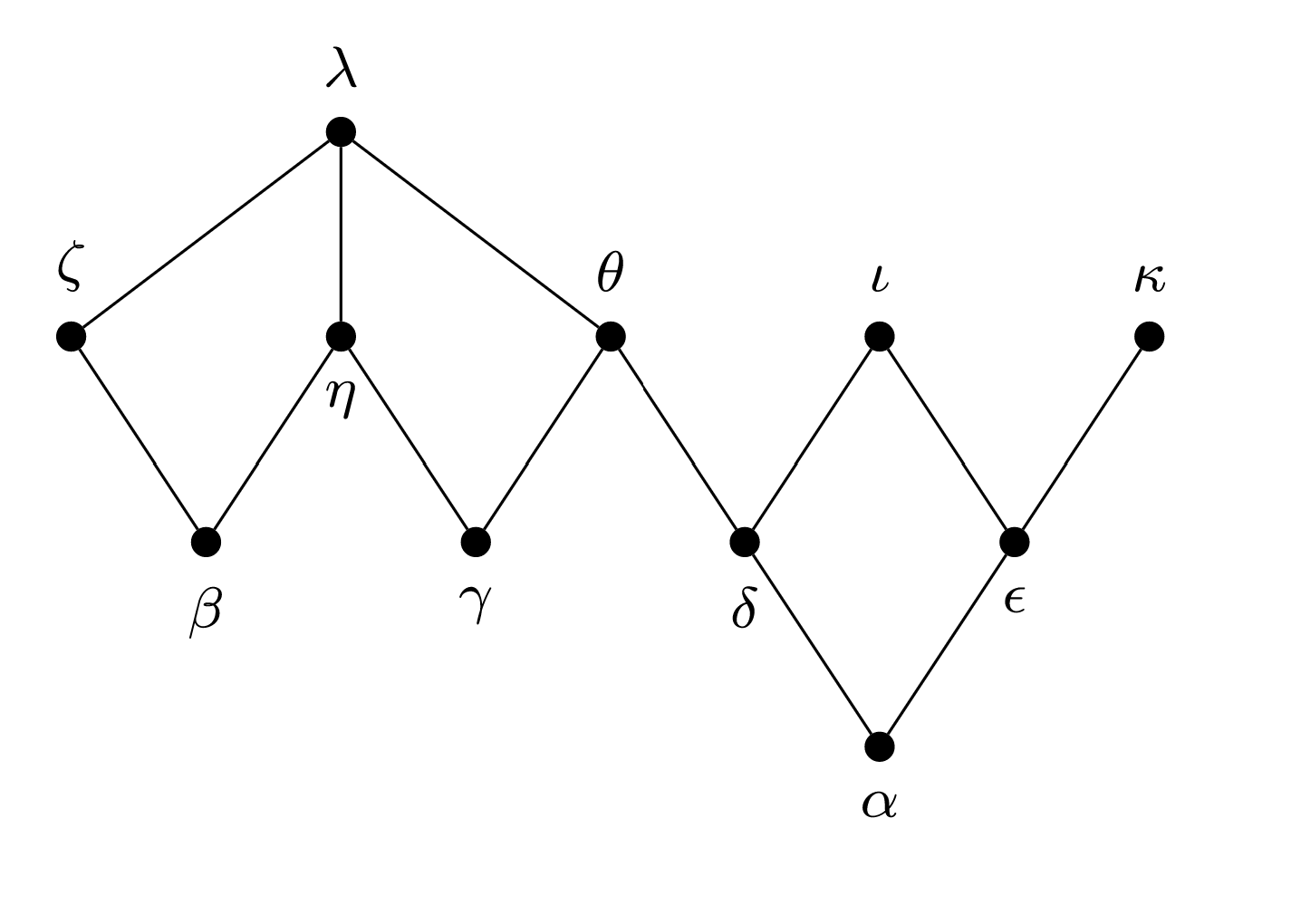19.8: Exercises
- Page ID
- 93879
Recognizing a partial order from its graph.
In each of Exercises 1–2, you are given a directed graph for a relation on the set \(A = \{a,b,c,d\}\text{.}\) Determine whether the relation is a partial order. Justify your answers.
Exercise \(\PageIndex{1}\)

Exercise \(\PageIndex{2}\)

Testing partial orders.
In each of Exercises 3–6, you are given a set \(A\) and a relation \(R\) on \(A\text{.}\) Determine whether the relation is a partial order. Justify your answers.
Exercise \(\PageIndex{3}\)
\(A\) is the set of all Augustana students; \(a \mathrel{R} b\) means that student \(a\) has a higher GPA than student \(b\text{.}\)
Exercise \(\PageIndex{4}\)
\(A\) is the power set of some finite set; \(S \mathrel{R} T\) means \(\vert S \vert \le \vert T \vert \text{.}\)
Exercise \(\PageIndex{5}\)
\(A\) is the set of words on some alphabet; \(w \mathrel{R} w'\) means \(\vert w \vert \le \vert w' \vert \text{,}\) where \(\vert w \vert\) means the length of word \(w\text{.}\)
Exercise \(\PageIndex{6}\)
\(A = \mathbb{R} \times \mathbb{R}\text{;}\) \((x_1, y_1) \mathrel{R} (x_2,y_2)\) means \(x_1 \le x_2\) and \(y_1 \le y_2\text{.}\)
Drawing Hasse diagrams.
In each of Exercises 7–8, you are given a finite, partially ordered set \(A\text{.}\) Draw the Hasse diagram.
Exercise \(\PageIndex{7}\)
\(A = \mathscr{P}(\{1,2,3,4\})\) under the subset relation.
Exercise \(\PageIndex{8}\)
\(A = \Sigma^\ast_4\text{,}\) the set of words of length \(4\) in the alphabet \(\Sigma = \{0,1\}\text{,}\) under dictionary order.
Exercise \(\PageIndex{9}\)
Draw all possible valid Hasse diagrams for each of the sets \(A = \{a,b\}\) and \(B = \{a,b,c\}\text{.}\) (Thus, you will have determined all possible partial orders on those sets.)
Exercise \(\PageIndex{10}\)
Consider the “divides” relation \(\mathord{\mid}\) on \(\mathbb{N}_{>0}\text{.}\) Provide an example of a set \(A \subseteq \mathbb{N}_{>0}\)
- that is finite, and on which \(\mathord{\mid}\) is a total order.
- that is infinite, and on which \(\mathord{\mid}\) is a total order.
- on which \(\mathord{\mid}\) is a partial order but not a total order.
Exercise \(\PageIndex{11}\)
Let \(A = \{0,1,2\}\text{,}\) and consider the partial order \(\mathord{\subseteq}\) on the power set \(\mathscr{P}(A)\text{.}\) List all pairs of incomparable elements in \(\mathscr{P}(A)\text{.}\)
Determining maximal/maximum/minimal/minimum elements.
In each of Exercises 12–16, you are given a partially ordered set \(A\text{.}\) Determine any and all maximal, maximum, minimal, and minimum elements.
Exercise \(\PageIndex{12}\)
\(A = \mathbb{N}_{>0}\) under the usual \(\mathord{\le}\text{.}\)
Exercise \(\PageIndex{13}\)
\(A = \mathbb{Q}_{>0}\) under the usual \(\mathord{\le}\text{.}\)
Exercise \(\PageIndex{14}\)
\(A = \mathbb{N} \setminus \{0,1\}\) under the “divides” relation \(\mathord{\mid}\text{.}\)
Exercise \(\PageIndex{15}\)
\(A = \{2,5,11,13,22,65,110,143,496\}\) under the “divides” relation \(\mathord{\mid}\text{.}\)
Exercise \(\PageIndex{16}\)
\(A\) is the set of the first ten prime numbers under the “divides” relation \(\mathord{\mid}\text{.}\)
Exercise \(\PageIndex{17}\)
Suppose \(\mathord{\preceq}\) is a partial order on the set \(A = \{0,1,2\}\) such that \(1\) is a maximal element. What are the possibilities for the Hasse diagram of \(\mathord{\preceq}\text{?}\)
Topological sorting.
In each of Exercises 18–19, you are given the Hasse diagram for a partially ordered set \(A\text{.}\) Use the Topological sorting algorithm to determine a compatible total order on \(A\text{.}\)
Exercise \(\PageIndex{18}\)

Exercise \(\PageIndex{19}\)



